

BUG PROBLEMS CAN STRIKE WHEN YOU LEAST EXPECT THEM…
About 35 years ago, we had “woolly bear caterpillars” invade our farm, causing us to spray most of our acres. I had never heard of that insect prior to them showing up in massive numbers in our crops. Since then we’ve had grasshoppers, painted lady butterfly larvae, stinkbugs, black cutworms, soybean aphids, spider mites, bean leaf beetles, and I’m probably missing a few others, too. All these bugs appeared seemingly out of nowhere, and within a few days of us spotting them, we were spraying.
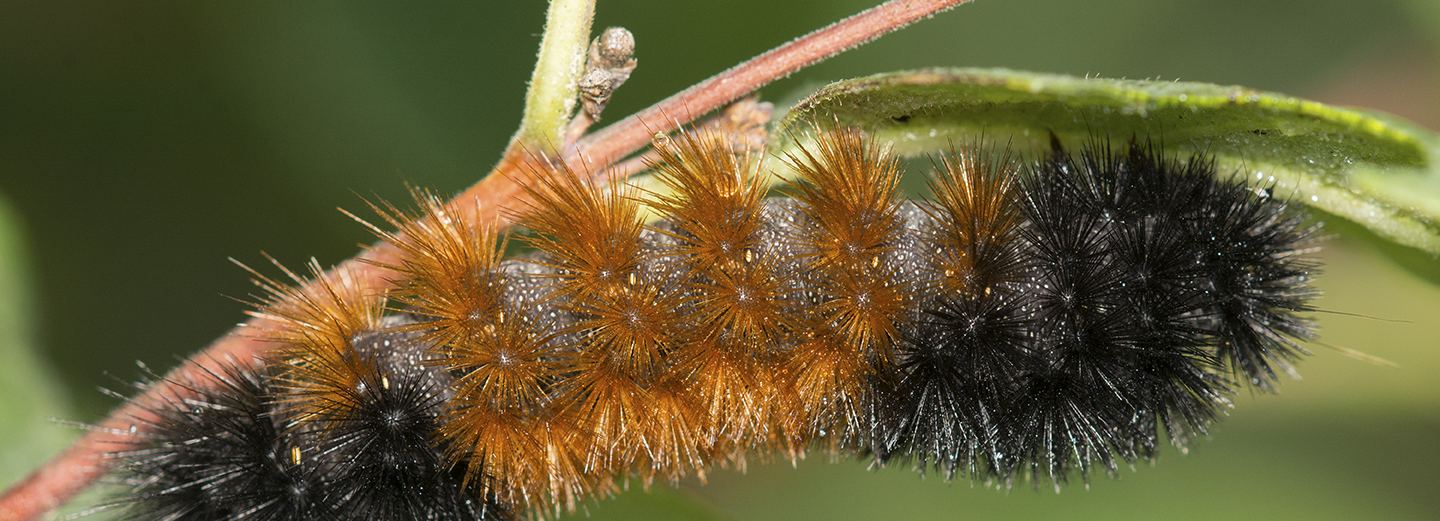
Our number one piece of advice is always, “Scout your fields often”, because you never know what new or old insect may show up, and when exactly you will need to spray.
BELOW IS A LIST OF INSECTS TO LOOK FOR RIGHT NOW.
However, if there is ever an insect you can’t identify in your fields, ask someone for help. It could be a beneficial insect, but it could also be something that could destroy your crop.
Before I go through this list of insects, let me also say that economic thresholds have almost never been so low. The economic threshold is the amount of insects you must have in your field to break even from an insecticide treatment. This varies based on potential yield loss, the price of the crop per bushel, and your total cost of application. If you are already out spraying something else like a herbicide or fungicide, your cost could be less than $2 per acre, since many pyrethroids are that cheap. On the other hand, if let’s say you need to use an expensive miticide for $10 and you have to call in a plane for another $10, $20 in total means more yield would be needed to offset the expense.
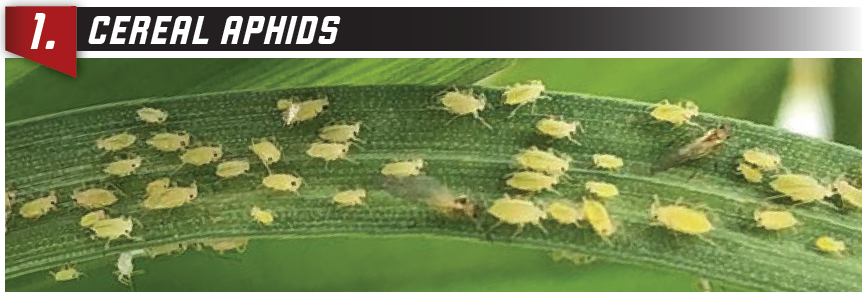
1. CEREAL APHIDS
There are many different kinds of aphids that may be in your small grain today. I can’t think of any that are good. You don’t need many aphids at all to justify adding less than $2 worth of insecticide, so I’m spraying long before I see 10 or 20 percent of the plants loaded with aphids.

2. GRASSHOPPERS
Grasshoppers are almost always more of an issue in dry areas following a dry spring with low hopper mortality, but you never know. The reason I bring up grasshoppers even though this spring was wetter than normal in most areas is if you wait until July or August to control them, they will be much more difficult to stop. Small grasshoppers are easy to control right now with cheap pyrethroids.
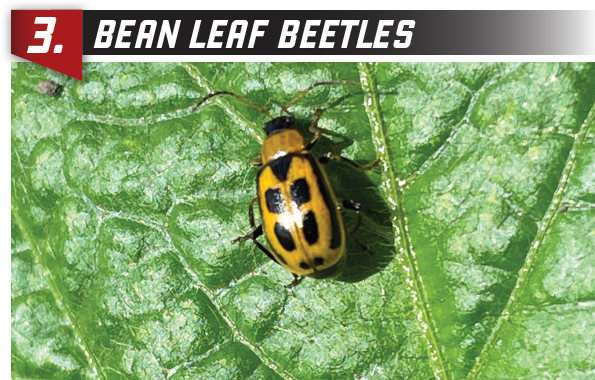
3. BEAN LEAF BEETLES
One of my favorite things to talk about with bugs is what we call a “revenge kill”. If you still haven’t sprayed your bean leaf beetles, the odds are very high those beetles have already laid eggs, and the adults are about to die anyway. While you can spray them and have the satisfaction of seeing dead bugs, you probably aren’t helping your profits this year.
Anytime you see any insect, do not wait to spray. Spray immediately, before mating and egg-laying occurs. That way, you break the cycle and reduce future populations, not to mention the reduction in leaf feeding. By the way, bean leaf beetles are a vector for bean pod mottle virus, that hurts yield and seed quality. Leaf loss before flowering doesn’t hurt yield, but having these bugs inject a disease into your crop does.
Next year, spray in May, the minute you see bean leaf beetles in your fields.
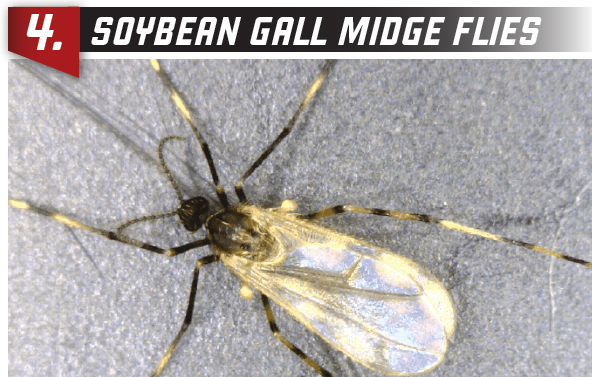
4. SOYBEAN GALL MIDGE FLIES
Few farmers have had success trying to control the flies when they show up, but if you want to try spraying your end rows and field borders, that would be your best shot. Once gall midge eggs are laid inside soybean stems, there is no way to stop them, unless of course you used Thimet in-furrow when you planted.
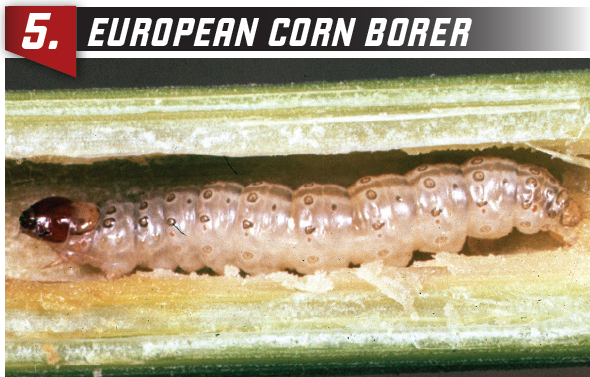
5. EUROPEAN CORN BORER
Yes, most farmers have Bt corn, but if you don’t, now is the time to start scouting for corn borers. Usually when the corn reaches knee high is when I worry about corn borer the most.
If you see shotholes or egg masses, spray quickly because it doesn’t take long for this bug to move down the plant and bore into the stem. At that point, you can no longer kill it.
